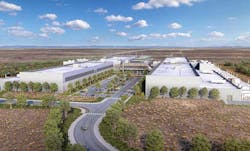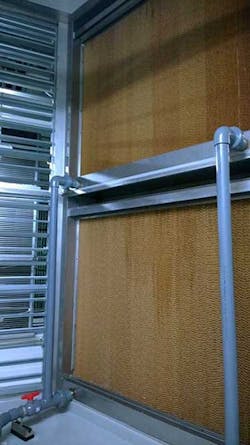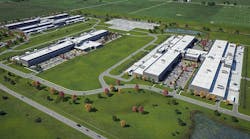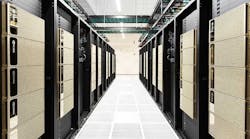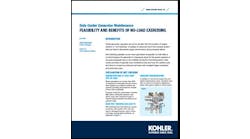A million square foot data center is coming to … Idaho?
Meta continued its extraordinary infrastructure expansion Wednesday, announcing plans to build a 960,000 square foot data center in Kuna, a suburb of Boise, Idaho. Once completed, the data center will represent an investment of more than $800 million and support approximately 100 jobs.
Idaho has no history as a location for large data centers, with only a handful of commercial facilities. The state’s biggest data center appears to be a 34,000 square foot facility in Boise operated by Involta, a regional provider focused on second-tier markets.
That will change once Facebook starts building in Kuna, a town of 24,000 that’s about 18 miles southwest of Boise. The 960,000 square foot facility will be 28 times the size of the Involta facility, and if history is any indicator, will likely be the first of several data centers.
These hyperscale cloud campuses concentrate computing power in multiple data center buildings, enabling Meta to rapidly add cloud capacity and electric power, creating economies of scale as more workloads migrate into these massive server farms. Facebook typically builds between three and nine buildings on a campus, spanning as much as 5 million square feet of space.
Why Idaho? “Kuna stood out as an outstanding location for a number of reasons,” Meta said in a Facebook post announcing the project. “It provides good access to infrastructure and renewable energy, has a strong pool of talent, and a great set of community partners.”
Building Big for the Future Metaverse
The selection of Kuna suggests Meta may be filling in the “holes in the map” as it builds out its network across the United States, positioning its cloud campuses to support low-latency connections between data centers as it seeks to move larger volumes of data across the Internet. The company recently changed its name from Facebook to Meta as part of a new mission to create a metaverse – a globally-distributed virtual world that can serve a billion users or more.
While latency always matters, in the metaverse it will matter even more. Whatever form they take, metaverse technologies are bound to be resource-intensive applications, as noted in our recent expert roundtable (The Metaverse Will Need A Lot of Data Centers). That’s why Meta is developing faster network equipment and AI supercomputers that can handle greater data crunching.
Meta is always in building mode to support the growing global audience for its platforms, which include Facebook, Instagram and Messenger. The company recently said it has 47 data centers under construction, including capacity expansions within existing buildings as well as new construction at multiple sites.
That spending will clearly ramp up as the company retools its data centers and networks for its metaverse ambitions. Meta says it expects to invest between $29 billion and $34 in capital expenditures in 2022, up from $19 billion last year.
Over the past 18 months, Meta has announced new data centers in Arizona, Illinois and Tennessee, as well as major expansions of existing campuses in Iowa, Utah, Georgia and Prineville, Oregon, where the company is rolling out a multi-story data center design featuring two floors of server rooms to boost capacity.
Meta is also the largest buyer of third-party “wholesale” data center space built by developers, leasing 283 megawatts of capacity across six markets, according to North American Data Centers. This massive leasing is above and beyond Meta’s in-house construction program, as it pursues a strategy of building huge data center campuses in remote areas, while leasing space from developers in the largest data center markets.
The company now operates company’s 19 data centers, which upon completion will span more than 41 million square feet of data center space, including 35 million square feet of campus capacity in the U.S., and 5.4 million square feet (499,000 square meters) of global space planned for sites in Ireland, Sweden, Denmark and Singapore.
Meta Promises to Focus on Water Stewardship
Kuna is about 300 miles from the original Facebook data center campus in Prineville, and 400 miles from a campus that is under construction in Eagle Mountain, Utah. There are also reports that Facebook is working with QTS Data Centers to create a large cloud campus in Hillsboro, Oregon, an emerging hot spot for hyperscale data center development. QTS is seeking up to 250 megawatts of power to support Facebook and its other tenants in Hillsboro, which is about 200 miles West of the Prineville campus.
Fresh air passes through dampened cooling media inside a Facebook data center in North Carolina. This technique allows reduced use of water in data center cooling. (Photo: Rich Miller)
Meta pledged that the Kuna campus will be built to high standards for sustainability.
“Our data centers are among the most advanced, water- and energy- efficient data center facilities in the world,” Meta said. “We approach sustainability from the ground up—from design and construction to energy sources, water stewardship, and responsibly managing the end of life of our equipment. The Kuna Data Center will be at least 80% more water efficient than the average data center. Our cooling system relies on outside air for cooling for at least 50% of the year.”
Sustainability matters more than ever in data center development, especially when it comes to water. Extreme heat and drought are bringing sharper scrutiny of data center water use, raising the bar for fast-growing hyperscale computing specialist, as well as data center developers.
The Kuna area is experiencing a “moderate drought” according to the U.S. Drought Monitor, which classifies about a third of Idaho as being in “severe drought.”
“In Idaho, we will be investing in water restoration projects in support of our data center,” Meta said in its announcement. “Additionally, we have a global goal to restore more water than we consume by 2030.
Meta also said it has “worked closely with Idaho Power to develop and implement a new green tariff that will allow companies like us to support their operations with 100% renewable energy” in Kuna.
The company said it expects as many as 1,200 construction workers will be on site at the peak of construction.
